Plant description
Arguably famous on Instagram, the Split Leaf Philodendron is a bold statement plant right out of the nursery. No, this isn’t Monstera (read below for how to tell the difference between the two).
The Split Leaf Philodendron is a fun, tropical addition to any houseplant collection, thriving in most environments with sufficient light and humidity.
This popular Philodendron species has dark, glossy, deeply-lobed leaves that can grow to the size of a large pizza. Seriously! Grown indoors, the Split Leaf Philodendron grows prolifically, reaching up to 10 feet in good conditions.
Over time, the Split Leaf Philodendron spreads horizontally, so make sure to dedicate a buffer zone for this guy.
Plant facts
| common name | Lacy Tree Philodendron |
| botanical name | Philodendron bipinnatifidum |
| no. of species | 480 |
| family | Araceae |
| biological life cycle | perennial |
| foliage | evergreen |
| mature size | 6 feet high indoors |
| time to maturity | 15 years outdoors |
| origin | Brazil, Bolivia, Argentina and Paraguay |
| light conditions | bright, indirect light |
| soil type | moisture-retentive and well-draining |
| soil pH | slightly acidic |
| USDA Zone | 9-11 |
| toxicity | toxic to plants and people if ingested |
The Split Leaf Philodendron is part of the Araceae family (cousin to Pothos) and is native to tropical and subtropical climates in Brazil, Bolivia, Argentina and Paraguay.
Varietal connoisseurs take note! This species of Philodendron is frequently confused with the Monstera Deliciosa, and both are commonly called the Swiss Cheese Plant. However, there are two large differences between the species.
Popular varieties
The easiest way to differentiate the Split Leaf Philodendron from Monstera Deliciosa is to examine the leaves. Philodendrons typically have deeply lobed leaves, not fenestrated leaves (holes) – a very common feature of the Monstera Deliciosa.
The other difference is that a true Split Leaf Philodendron is self-heading, which means the large and stiff stems are sturdy enough to keep the plant upright without any support. The Monstera plant, on the other hand, is a climbing plant, typically supporting itself with strong aerial roots that wrap around support structures.
How to take care of a split leaf philodendron
light 🔆
Best light: bright, indirect light
Split Leaf Philodendrons enjoy moderate to bright light environments. They’re also able to tolerate and adjust to shady environments. Avoid direct sun as this can cause the foliage to brown or burn.
Water 💧
Water requirements: Water needs: top two inches of soil should dry before rewatering
The Split Leaf Philodendron enjoys moist but not soggy soil. Allow the top two inches of soil to dry before watering again. Be sure to drain off excess water in the saucer below the container to prevent soggy roots. If the leaves begin to turn yellow, this could be a sign of overwatering.
You can check your soil moisture levels with a moisture meter to be sure:
Humidity 🌫️
Humidity preferences: Aim for humidity around 40-50% with occasional misting
As a tropical plant, Split Leaf Philodendrons prefer high humidity, though they can tolerate lower humidity environments. Use a room humidifier or simply mist the foliage with a spray bottle to increase humidity in the air. If the foliage begins to brown around the edges, this could be a sign of overly dry air.
Temperature 🌡️
Ideal temperature: Philodendrons should be placed in a temperature between 65°F (18°C) to 80°F (27°C). Avoid placing philodendrons in temperatures below 60°F (16°C).
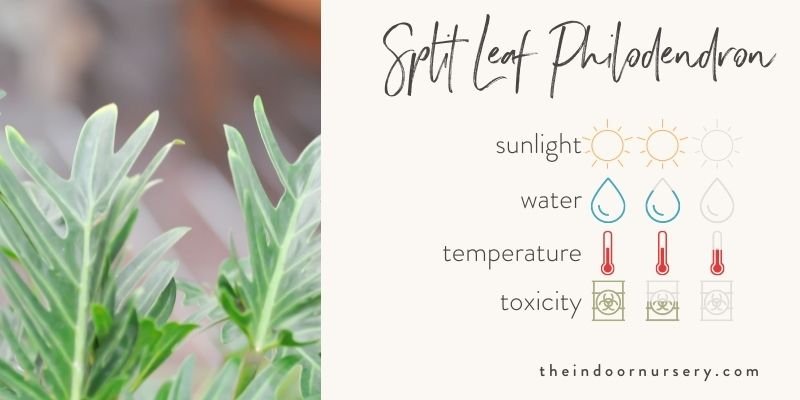
Fertilizer 💩
Fertilizer preferences: Fertilize Split Leaf Philodendrons every two weeks during the growing season from spring to fall with a general water-soluble fertilizer. Feeding can be slowed down to once per month in the colder months. Amending Philodendrons’ soil with fertilizer will help the plant produce larger, glossier leaves.
Want to know which fertilizer works best? Read our plant fertilizer experiment to find out.
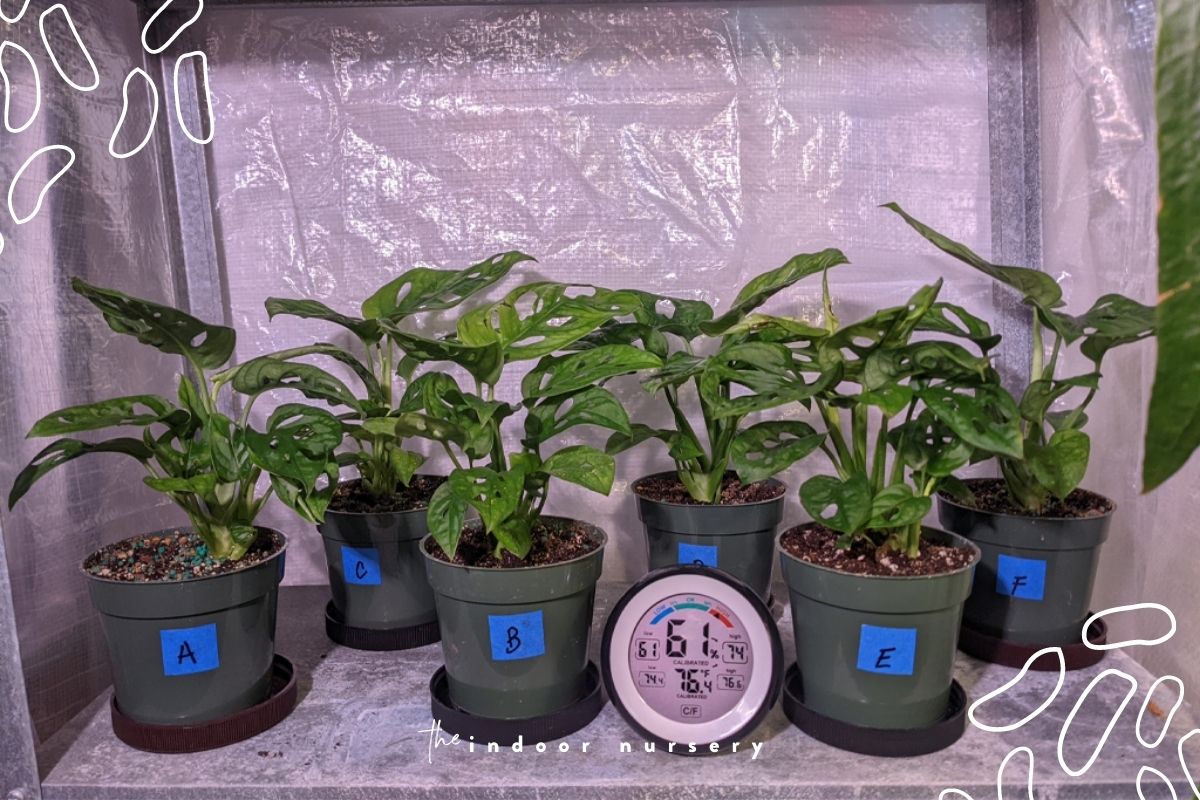
Soil
Soil type: moisture-retentive and well-draining
pH level: slightly acidic
The Split Leaf Philodendron should be placed in a nutrient-dense, well-draining potting mix that can hold a great deal of moisture. Mixing perlite and peat moss (sphagnum moss) into a standard potting mix will help the soil retain moisture.
Repotting
Due to its fast growth, Split Leaf Philodendron roots can fill pots very quickly and should be repotted every year. The best time to repot these plants is in the spring.
The new pot should be about 2-3 inches larger than the previous pot so that the root ball has a few extra inches of space for new growth. Pack the plant in its new pot with fresh, well-draining soil to stabilize the root ball. Hold off fertilizing for a couple of months after repotting to prevent shock.
Propagation 🌱
It is incredibly easy to propagate Split Leaf Philodendron! This is done by taking leaf-bud cuttings grown in water or soil. Philodendron cuttings make beautiful home accents or simple gifts placed in jars, vases, or bouquets of flowers.
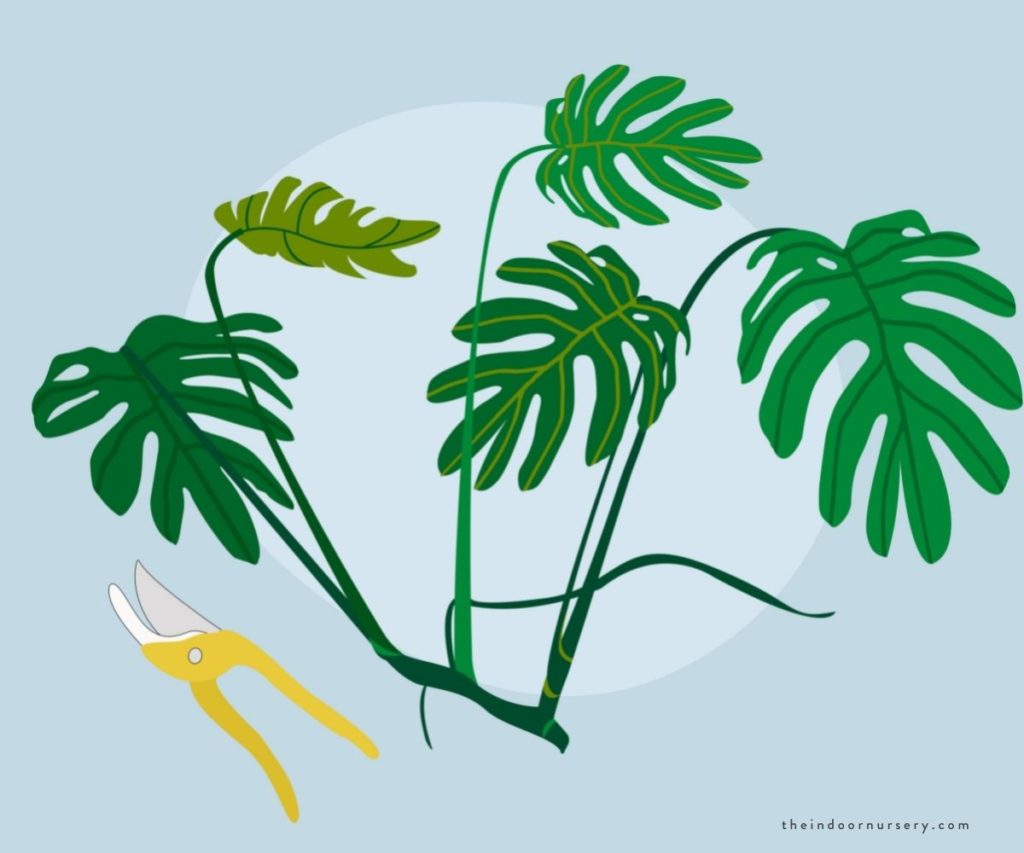
To grow cuttings in soil remove a terminal leaf with 6 stems just below an aerial root using a sharp, sterile pair of garden shears. Cut at an angle, so the stem comes to a point where the aerial root used to be. Applying root hormone to the end of the cutting is optional before it is in a small pot with drainage holes and fresh potting mix. Wrap the planted cutting in a plastic bag or something similar to create a greenhouse effect and increase temperature and moisture. Remove the bag for a few hours daily to allow for air circulation and avoid mold growth. Once roots have grown and taken hold after a few weeks, remove the bag and transplant the cutting.
To grow cuttings in water follow the same procedure as above, and simply place the Split Leaf Philodendron in a glass of water. Change the water once or twice a month to prevent algae or bacteria from growing in the medium. Once roots have started to grow, introduce a small amount of soil into the water in preparation for transplanting.
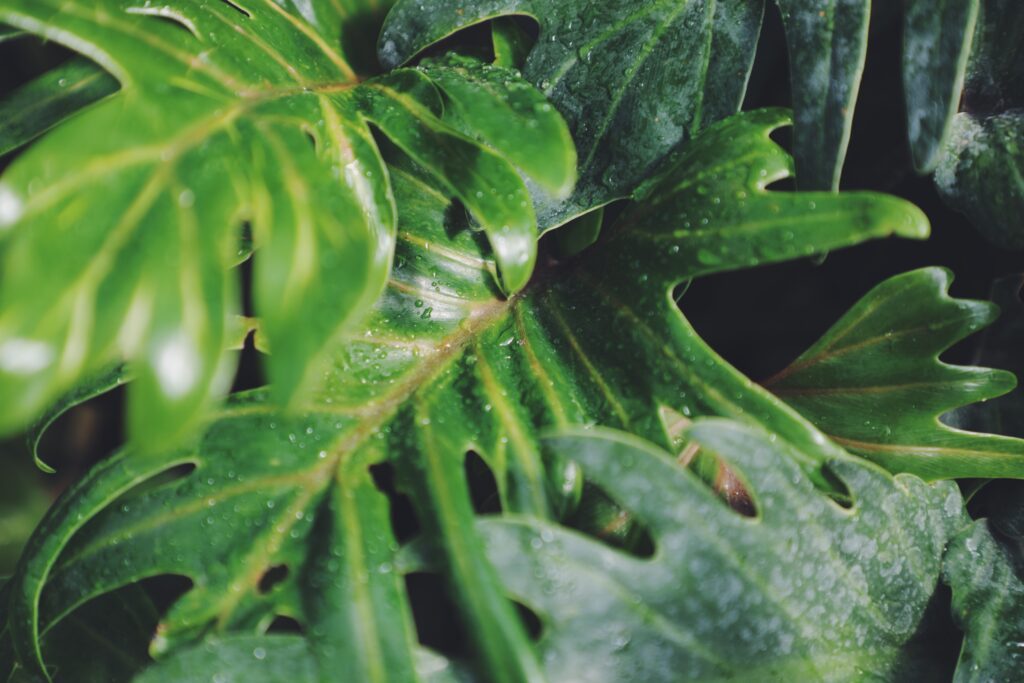
Read our step-by-step guide on how to propagate a split-leaf philodendron for more details.
Pruning 🌿
Pruning the Split Leaf Philodendron prevents this exuberant plant from taking over your home! Remove stray stems and dying or damaged growth in early spring. Use a sterile pair of scissors or knife and cut stems close to the main plant.
Unruly aerial roots can be trimmed without hurting the health of the plant.
Pests and diseases 🐛
Pests: prone to common house pests; easily treatable with insecticidal soap or neem oil
Philodendron plants are susceptible to a myriad of common pests including aphids, mealybug, scale, and spider mites. New plant growth is especially attractive to pests. Pests should be removed immediately using insecticidal soap or neem oil.
Split leaf philodendron plant care tips
- Mature Split Leaf Philodendrons can become top-heavy. Invest in a sturdy, deep pot to prevent toppling.
- Split Leaf Philodendrons can also be planted outdoors in USDA hardiness zones between 9 and 11.
- To prevent too much spread, try using a moss pole. The surface makes it easy for roots to attach to, and it can help promote upward growth.
Common Problems / FAQs:
1. Yellow leaves
→ The most likely cause of this is overwatering. Be sure to only water when the top few inches of soil are dry. If this isn’t the case, yellow leaves can also be caused by insufficient light or a lack of nutrients. Avoid direct light, but place the philodendron in an indirect bright sunny spot.
2. Dry, brown, shriveled leaves
→ It’s likely the Split Leaf Philodendron is being underwatered or that the air is too dry. Make sure that the soil does not entirely dry out before watering again. To improve humidity levels, frequent misting or using a pebble tray with water near the plant can help.
3. Root rot
→ Philodendron plants do not tolerate soggy soil, and any remaining water should be dumped after watering. It’s best to remove the infected part of the plant as soon as possible with sterilized scissors. The roots will most likely be mushy and look brown or black in color. It should be repotted in a new pot with fresh soil to make sure no infected rot is left.
More about philodendrons
- 13 Different Types of Philodendron Plants For Jungle Vibes
- Philodendron Brasil Care Guide
- Split Leaf Philodendron Care Guide
- Growing Philodendron Micans Care Guide
- How to Propagate a Split-Leaf Philodendron: Easy Step-by-Step Guide
- Growing pink princess philodendron: How to grow them and keep them happy
- How to care for a philodendron (for beginners): An expert reveals secrets

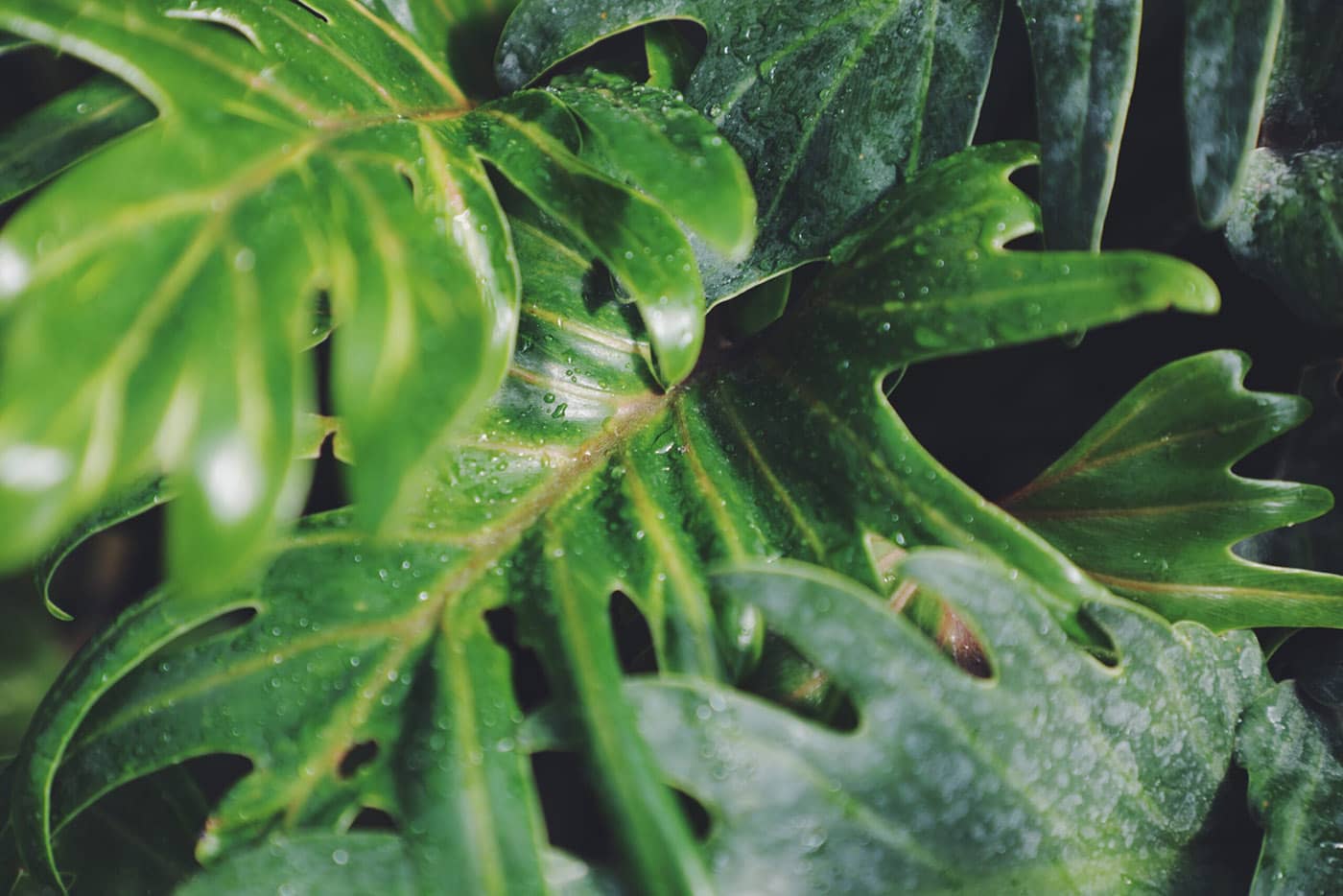
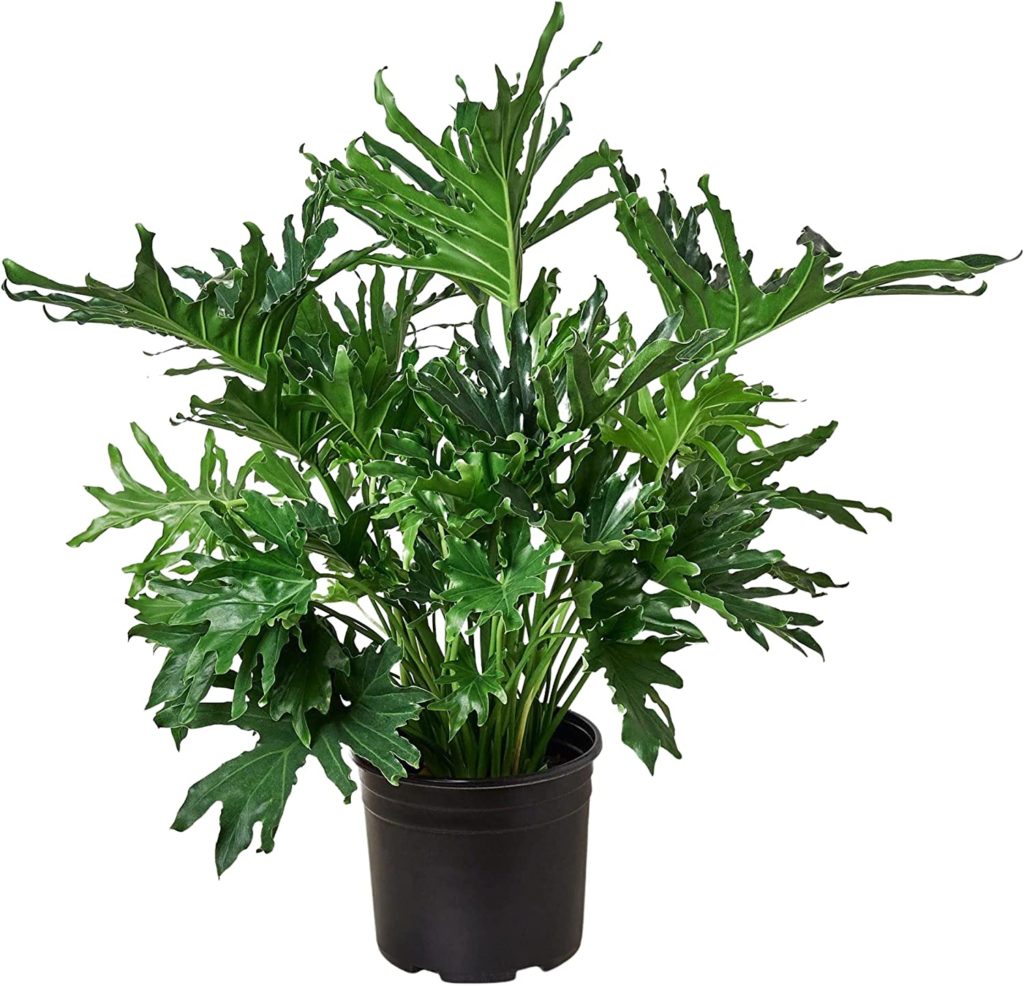

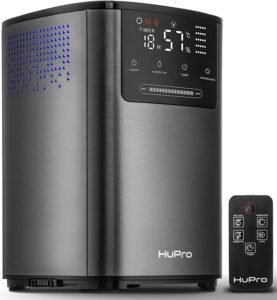




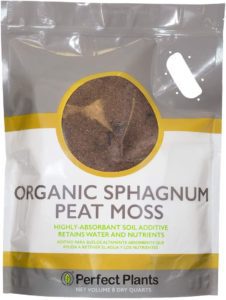
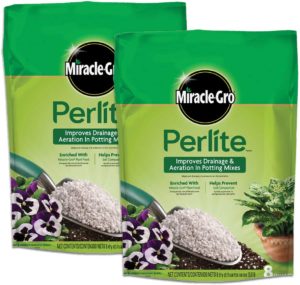



Hey, Marcia! Thanks for reading :) gosh, that's a great idea to double up on your watering globe and spike.…